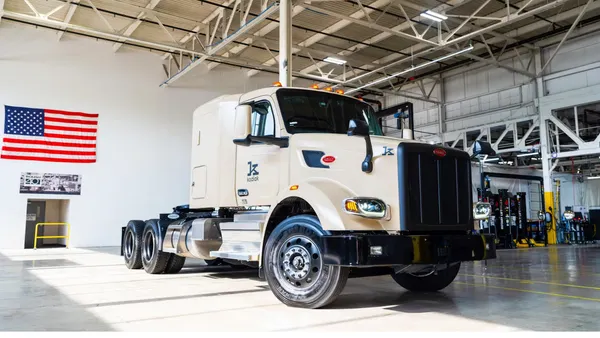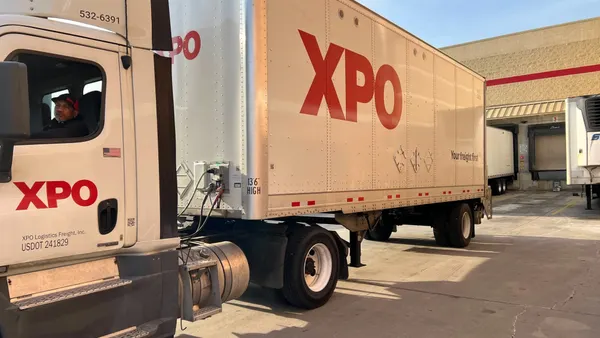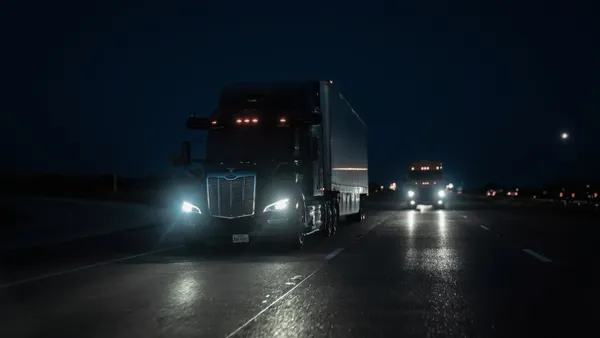Dive Brief:
- Driver healthcare costs are part of the calculation fleets should factor in when considering total cost of ownership for EVs, Duane Hughes, CEO of EV OEM Workhorse Group, said during a U.S. Chamber of Commerce webinar Tuesday.
- Regenerative braking, found in electric vehicles, can mitigate last-mile drivers' need for work-related knee surgeries, in turn saving fleets money, Hughes said. "It really relates to healthcare costs and insurance costs," he said.
- A driver in a standard, last-mile vehicle traveling 65 miles per day, with 200 starts and stops, will end up going back and forth from the accelerator to the brake more than 1,000 times a week, "which is associated to a number of knee surgeries these fleets are providing their drivers on an annual basis," Hughes said.
Dive Insight:
Public health is often at the center of EV advocates' arguments, particularly in regards to final-mile vehicles that frequent residential neighborhoods. So, for that reason and others, trucks that don't pollute are attractive to lawmakers.
But driver benefits are an important part of creating a business case for EVs. Paul Rosa, senior vice president of procurement and fleet planning at Penske Truck Leasing, said in November that company drivers, after operating an EV, have expressed appreciation for no diesel smell, the ability to hear nature's sounds, great handling and good pickup speed.
"Electric heavy-duty vehicles have many tangible benefits, including several inherent health advantages. These include a much quieter ride than diesel trucks, making EVs less impactful on a driver’s hearing," a 2020 report from the Center for Climate and Energy Solutions found.
The report also mentioned that the reduced diesel-fume inhalation "may also help reduce a company's healthcare costs and increase its profitability."
When considering total cost of ownership for EVs, fuel savings is one of the first items to come to mind. Workhorse delivery trucks boast a 32-mile-per-gallon equivalent, compared to combustion engines, which get 5.5 miles per gallon, Hughes said.
Then, a fleet might factor maintenance into ownership costs. EVs have fewer components than traditional engines, and they're designed to last 20-25 years, Hughes said. This mitigates the routine malignance combustion engines require.
While a Class 6 truck with a combustion engine might rack up costs of more than $1 per mile running last-mile routes, including fuel and maintenance, a Workhorse EV can do the job for 40 cents per mile, Hughes said. A Workhorse drone can deliver a 10-pound package for less than 4 cents a mile, he added.
"But it really goes deeper than that. It's also the other costs ... from [a return on investment] and total cost of ownership perspective, that you can recognize when you understand the business of these [last-mile] companies," Hughes said, adding that this is where knee surgeries factor in.










